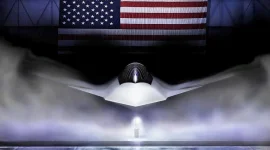- Views: 2K
- Replies: 18

The Indian Air Force (IAF) has expressed reservations about the military utility of the proposed HAL/NAL Regional Transport Aircraft-90 (RTA-90), a civilian aircraft intended for the UDAN program connecting smaller Indian cities.
While the Ministry of Defence (MoD) is considering approving the project, the IAF is concerned about the aircraft's limited cargo capacity and suitability for military operations.
A senior IAF officer, speaking on condition of anonymity, highlighted the significant design changes required to convert the RTA-90 into a military cargo plane.
These modifications, including the addition of a rear ramp door, would still result in a cargo hold capacity of less than 18 tons, according to NAL estimates. While this exceeds the capacity of the IAF's recently inducted C-295M transporters, it falls short of the C-130J and the C-390M, a leading contender in the IAF's tender for 60 medium transport aircraft.
The IAF is wary of repeating past experiences with limited-role aircraft like the Avro, which proved inefficient for broader military operations. They fear that a military variant of the RTA-90 might lack versatility and end up with a narrow range of applications.
The MoD is eager for the IAF to participate in the RTA-90 program, aiming to leverage economies of scale and promote indigenous aircraft development. However, the IAF remains cautious, prioritizing operational effectiveness and avoiding potential limitations.
Despite these concerns, the IAF has not completely dismissed the RTA-90. They are open to exploring its potential as a force multiplier or a specialized platform for Signals Intelligence (SIGINT) or Electronic Warfare (EW) missions. This suggests a willingness to find a role for the aircraft if its design can be adapted to meet specific operational requirements.
The IAF's concerns underscore the challenges of balancing commercial viability and military requirements in indigenous aircraft programs. Finding a design solution that satisfies both civilian and military needs will be crucial for the RTA-90's success. This could involve further design revisions to increase cargo capacity and enhance the aircraft's adaptability for various military applications.
The RTA-90 program is a joint effort between Hindustan Aeronautics Limited (HAL) and the National Aerospace Laboratories (NAL). The UDAN (Ude Desh ka Aam Nagrik) program is a government initiative aimed at improving regional air connectivity in India by making air travel more affordable and accessible.




